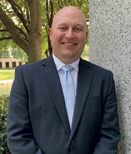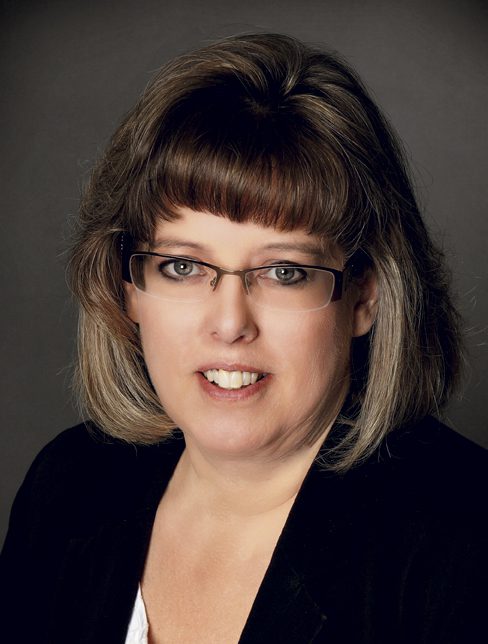Specialty Lines Markets
SOCIAL SERVICES AND NONPROFITS
Hard times and a hard market will test their resilience
By Joseph S. Harrington, CPCU
In a widely viewed TED Talk, activist entrepreneur Dan Pallotta cites five ways that public expectations about nonprofit organizations restrict their growth and capabilities: talent recruitment, advertising, risk taking, access to private capital, and the time allowed to show a return (in terms of new clients).
Pallotta might have added a sixth constraint: the ability to purchase insurance.
In the nonprofit world, insurance and risk management services fall under administrative overhead, and donors have long favored organizations with low ratios of overhead compared to spending directly on client service.
Donor insistence on low overhead may be softening somewhat, but not as fast as the market for coverage is hardening, and the demands for different types of insurance keep growing.

—Erin Crawford Peterson
Practice Leader, Community Care
Venture Insurance Programs
Rate hardening
“We are in a hard market,” says Erin Crawford Peterson, practice leader of Venture Insurance Programs Community Care™ program. “Underwriting is more strict, while carriers are increasing rates and reducing umbrella limits and limits for coverages such as sexual misconduct.
“Agents are more likely to remarket accounts at renewal,” she adds, “but due to COVID-19, clients are less inclined to move to another carrier, and more likely to accept rate increases.”
“Rates are hardening due to various circumstances,” says Chris Hale, program director for NSM Insurance Group’s Care Providers Insurance Services program. He cites property catastrophes, “social inflation” in liability claims, and hardening reinsurance markets among the factors driving rate hikes for primary coverage.
“The market as a whole has seen hardening rates across all lines, with property, auto, and umbrella among the lines seeing the largest increases,” Hale says. In the nonprofit sector, he finds that carriers are “limiting their exposures by lowering limits, such as those for abuse and molestation, and in some cases completely removing coverage in excess layers.”
He adds that the market for nonprofit directors and officers liability coverage has been significantly impacted by pandemic conditions and the financial uncertainties the pandemic has created.

—Chris Hale
Director, Care Providers Insurance Services
NSM Insurance Group
COVID’s impact
For most enterprises, the COVID-19 pandemic meant a sudden reduction or elimination of demand while “supply”—human or material—sat idle. For nonprofit services, demand remained constant while the ability to meet it was severely constrained.
“Many human service providers weren’t in a position to close operations, given the demand for around-the-clock care and critical services,” says Dawn Martin, vice president of underwriting for the Irwin Siegel Agency, which specializes in coverage for nonprofits. “The demand for services doesn’t go away.”
Martin explains that the shift from providing services on-site to a virtual format reduced premises liability exposure while increasing the level of property exposure for unoccupied buildings. At the same time, she estimates that an increase in online services in lieu of client visits reduced auto liability but changes the level of professional liability exposure, at least marginally.
The smaller a nonprofit was, the greater the impact of the pandemic, says Peterson.
“Most nonprofit risks generate their funds from events, and most of those events were cancelled,” she says. “Overall, it was a tough year to generate funds, especially for the smaller nonprofits out there.” Thankfully, she adds. “insurers were helpful and offered freezes on auto policies, and most carriers were flexible with payments.”
While nonprofits had to cancel fund-raising events during the pandemic, “many top donors were themselves impacted and may have scaled back on their charitable giving,” says Hale.
Some organizations were buoyed by ongoing grant allocations and public funds; others had to cut back on services.
At the same time, Hale adds, “many nonprofits stepped up to offer new services to meet needs brought on by the pandemic. This included providing childcare to first responders and their families when daycare centers closed or helping food banks and pantries establish external distribution systems.”
Adopting new operations or processes meant adopting new risks, says Hale, and the collaboration between nonprofit organizations and their brokers and carriers was critical in helping nonprofits deliver on their missions in a time of need.

—Dawn Martin
Vice President, Underwriting
Irwin Siegel Agency
Underinsured?
As Peterson sees it, nonprofit organizations have similar risk exposures and insurance needs as for-profit companies of comparable size and scope of operations. But, as Dan Pallotta’s TED Talk suggests, nonprofits are more constrained than their for-profit counterparts from purchasing the types and level of coverage they need.
Cyber insurance tops the list of coverage gaps for nonprofits.
“Cyber liability continues to be an area where many social service and nonprofit organizations remain uninsured or underinsured,” says Hale. “Many do not think they have an exposure in this area, but any that are processing donations, handling client information, or even circulating a newsletter with donor information can be at risk.
“Nonprofit accounts need to conduct a thorough review of their operations to determine what information is stored, how it is protected and who has access to it.”
“Cyber insurance should be a required coverage,” says Brad Storey, vice president of Irwin Siegel’s risk management division. “The pandemic clearly magnified that as remote work will continue to be a reality in the future.”
Peterson adds that small nonprofits often do not have coverage they need for directors and officers and for employment practices liability. “Most of them can get by without employment practices coverage, but it is recommended they always have the board covered,” she says. “Larger nonprofits are usually fully insured because savvy agents make sure their clients have no gaps in coverage.”

—Brad Storey
Vice President, Risk Management
Irwin Siegel Agency
As things reopen
As the pandemic wanes and the nation reopens, virtually every enterprise—for-profit and nonprofit—will be fundamentally reexamining its mission and market.
“As we reopen, nonprofit organizations are going to struggle financially for some time,” says Peterson. “Some services will be limited or discontinued because of low community participation, or for other reasons. Agents and brokers can advise their clients about proceeding with services they do well and identifying new opportunities.”
At this time, nonprofits “should embark on a full review of past and current operations with help from agents and brokers,” says Hale. “As your operations have changed, you want to make sure that your coverage still meets your needs.
“If you closed down certain operations due to COVID-19, or if you sold autos or locations while moving to virtual operations, that will affect your insurance premium and you want to make sure they are reflected in your coverage.
“For those that initiated new operations and/or began providing virtual programs, it is important not only to review your insurance coverages, but also your internal policies and procedures. By mitigating your risk before a loss occurs, you help control your insurance expenditures over time.”
Whatever else you do, don’t lose sight of the personal touch that distinguishes good service providers and insurance producers, says Storey.
“Have your clients and brokers get on the phone with underwriters to tell their story about the steps they’ve taken to control risks,” he says. “Develop a deep, shared understanding of where the client is going and assist them in implementing risk control.”
For more information:
Care Providers Insurance Services
www.ins-cps.com
Irwin Siegel Agency
www.siegelagency.com
Venture Insurance Programs
www.ventureprograms.com
The author
Joseph S. Harrington, CPCU, is an independent business writer specializing in property and casualty insurance coverages and operations. For 21 years, Joe was the communications director for the American Association of Insurance Services (AAIS), a P-C advisory organization. Prior to that, Joe worked in journalism and as a reporter and editor in financial services.





